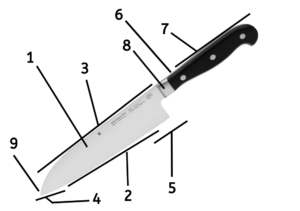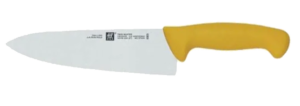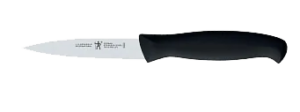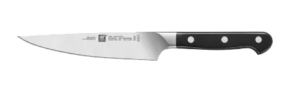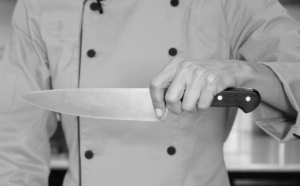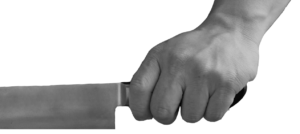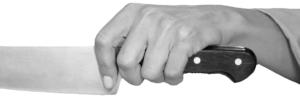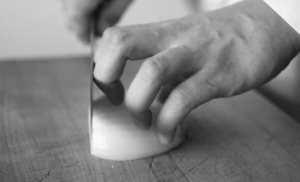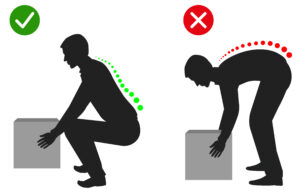2204 Following Standard Recipes
Importance of Following Standard Recipes
Consistency:
- Quality Assurance: Following a standard recipe ensures that every dish meets the same standard of taste, texture, and appearance. This is crucial in professional environments where customer satisfaction depends on consistent quality.
- Repeatability: Standard recipes allow dishes to be replicated accurately across different shifts and even different locations. This consistency is essential for maintaining a brand’s reputation, especially in franchises.
Efficiency and Cost Control:
- Waste Reduction: Precise ingredient lists and quantities help minimize waste by ensuring that cooks use only what is necessary.
- Budget Management: Knowing the exact cost of ingredients for a specific recipe aids in budgeting and financial planning. It also helps in pricing menu items effectively to ensure profitability.
- Streamlined Operations: Standard recipes provide a clear procedure, reducing the time needed to train new staff and minimizing errors in the kitchen.
Training Tool:
- Skill Development: Standard recipes are excellent training tools for new chefs as they learn the fundamentals of cooking and ingredient interaction.
- Uniformity in Training: They ensure that all staff are trained to the same level and understand exactly how each dish should be prepared and presented.
- Innovation Base: Once chefs are comfortable with standard recipes, they can use them as a foundation for creating new variations and dishes, applying their creativity and understanding of the basic recipe structure.
Practical Tips for Following Standard Recipes
- Read the Entire Recipe Before Starting: This helps you understand the necessary ingredients, equipment, and the time required, avoiding any mid-cooking surprises.
- Measure Ingredients Accurately: Use the appropriate measuring tools for dry and liquid ingredients and double-check measurements for precision.
- Follow the Specified Techniques: Techniques specified in a recipe, such as chopping sizes or cooking temperatures, are often designed to produce the best possible outcome for the dish.
- Keep Notes: If adjustments are made or needed for a recipe, note them directly on the recipe for future reference. This can help in refining the dish and in training others.
- Respect the Process: Understand that changing one part of the recipe can affect the entire dish. If modifications are necessary, consider how they will interact with other components of the recipe.
Importance of Accurate Measurements
- Chemical Reactions: In baking, the exact ratios of ingredients like baking soda, baking powder, flour, and liquids are crucial because they undergo chemical reactions that affect the texture and rise of baked goods.
- Flavor Balance: The right measurements ensure that flavors are balanced. Too much or too little of any ingredient can throw off the intended taste of a dish.
- Texture and Consistency: For both cooking and baking, the texture and consistency of the final product are heavily dependent on using the right amounts of ingredients. For example, too much flour can make cookies tough, while too little may make them too flat and crispy.
- Cost Efficiency: Using the correct measurements prevents waste, saving money and resources, which is especially important in a professional setting.
Ensuring Precision in Kitchen Measurements
Accurate measurements in the kitchen are crucial for culinary success, affecting everything from taste and texture to appearance and consistency. Here’s a closer look at some specific practices that can help ensure measurement accuracy for various types of ingredients.
Consistency in Measurement Units
Consistency in using measurement units throughout a recipe is vital to avoid confusion and errors. Mixing different systems (metric vs. imperial) can lead to incorrect proportions and affect the outcome of the dish.
Tips:
- Choose One System: Stick to one measurement system (metric or imperial) throughout the recipe to maintain consistency.
- Use Conversion Tools: If the recipe uses different units, convert all measurements to one system before you begin. Many digital kitchen scales can switch between grams and ounces, which can be helpful.
- Consistent Techniques: When measuring ingredients like flour, always use the same method (e.g., spoon and level or scoop and level) to ensure consistency in the quantity measured each time.
Measure Sticky Ingredients with Oil
Challenge:
- Measuring sticky ingredients like honey, syrup, or molasses can be messy and inaccurate, as these ingredients tend to stick to the measuring tools, making it difficult to get them completely out.
Solution:
- Coat with Oil: Lightly coat your measuring spoon or cup with a neutral oil (like canola or vegetable oil) before measuring the sticky ingredient. The oil creates a non-stick surface that allows the ingredient to slide right out without sticking.
- Use Cooking Spray: A quick spray of cooking oil works just as well and is even easier. Just spray, measure, and watch as the ingredient empties cleanly from the cup or spoon.
Use a Measuring Jug for Liquids
Advantages:
- Measuring jugs are designed to provide accurate measurements of liquid ingredients, which are crucial for the success of many recipes, particularly in baking and cooking where liquid proportions can make or break a dish.
Best Practices:
- Read at Eye Level: Place the measuring jug on a flat surface and stoop down to check the level at eye level. This ensures that you are reading the measurement at the meniscus (the curve at the surface of the liquid) and getting the most accurate measurement.
- Use a Clear Jug: Clear glass or plastic jugs with easy-to-read measurement markings are best. They allow you to see the liquid level without lifting the jug.
- Stabilize: Use a jug with a handle for stability when pouring liquids into and out of it, which helps prevent spills and measurement errors.
Additional Tips
- Calibrate Your Tools: Regularly check that your measuring tools are accurate. For digital scales, you might need to recalibrate them periodically according to the manufacturer’s instructions.
- Prepare in Advance: Measure all your ingredients before you start cooking. This mise en place approach not only saves time but also reduces the likelihood of measurement mistakes under the rush of cooking.
- Invest in Quality Tools: High-quality measuring tools can improve accuracy. They tend to have clearer markings and more durable constructions, which maintain their accuracy over time.
Scaling Recipes: Essential Tips for Success
Understand the Recipe
Familiarity Is Key: Before you begin scaling, make sure you understand the recipe well. Prepare it at least once as written to gauge textures, flavors, and cooking times.
Adjust Ingredients Proportionally
Linear Scaling: Most ingredients can be scaled directly based on the desired number of servings. However, precise measurements become crucial—be exact with weights and measures.
Be Mindful of Surface Area and Volume
Pan Size Matters: When scaling recipes, consider the surface area of baking dishes or pans. A larger batch may require a larger pan, or multiple pans, to maintain the depth and surface area needed for proper cooking and heat distribution.
Adjust Cooking Times
Not Always Linear: As the volume of a dish increases, cooking time may need to be adjusted. Larger volumes might require longer cooking times, but this isn’t always a direct increase. Monitor closely and adjust as needed.
Spice and Seasoning Adjustments
Taste as You Go: When scaling up, the increase in spices and seasonings may not need to be proportional. Sometimes, less is more to avoid overpowering a dish. Always taste and adjust seasonings gradually.
Consider Liquid Ingredients
Maintain Consistency: Be cautious with the amount of liquid added in scaled-up recipes. The liquid might not need to be increased exactly in proportion if the goal is to achieve a certain consistency, such as in soups or sauces.
Egg Adjustments
Fractional Eggs: Scaling recipes might result in needing half an egg or other fractions. Beat the egg and measure out what’s needed, or adjust other liquid components to compensate.
Use a Recipe Scaling Calculator
Leverage Technology: Utilize online scaling calculators or apps designed to adjust recipes accurately. These tools can handle the math and offer adjustments for each ingredient automatically.
Chemical Leaveners
Baking Specific: Ingredients like baking powder and baking soda may not scale directly with the recipe size. Over-leavening can cause baked goods to rise and collapse. Increase these ingredients more conservatively and based on the function they serve in the recipe.
Implementing These Tips
When scaling recipes, it’s also helpful to:
- Document Changes: Keep a record of any adjustments made and the outcomes. This can guide future attempts and help refine the scaling process.
- Adjust in Stages: If scaling a recipe up very significantly, consider doing so in stages to ensure each batch maintains the desired quality and consistency.
- Consult with Experienced Cooks: If unsure, consulting a more experienced cook or chef can provide insights and suggestions for adjusting specific ingredients or techniques.

